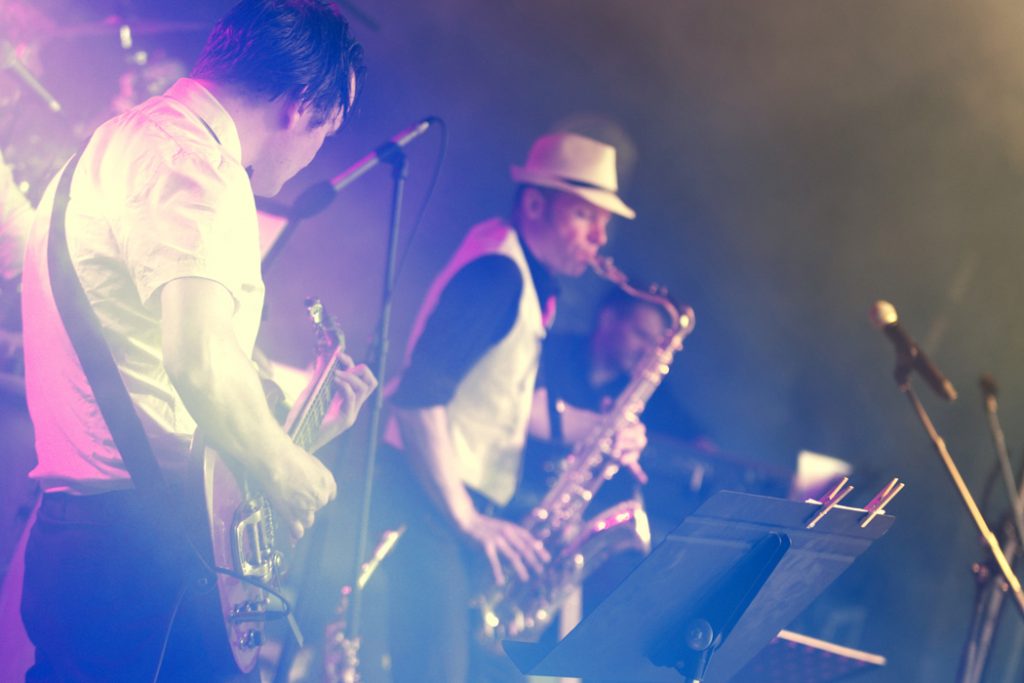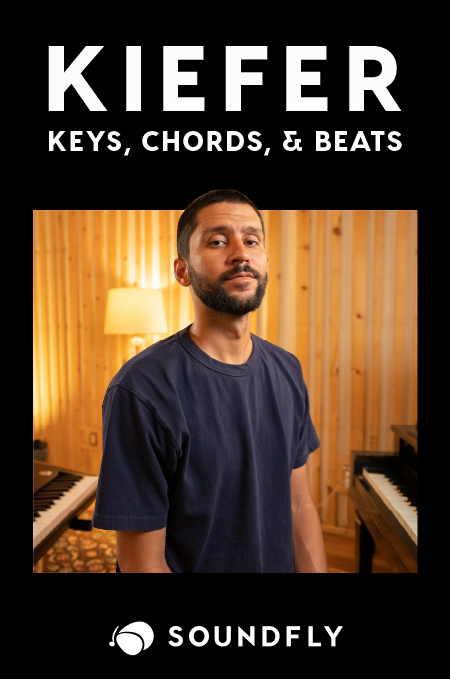+ Welcome to Soundfly! We help curious musicians meet their goals with creative online courses. Whatever you want to learn, whenever you need to learn it. Subscribe now to start learning on the ’Fly.
How much time does your band spend arguing over setlists, or who gets to write them? Back up… how much time do you even spend thinking about your setlists at all?
If you’re a band that basically just shows up and plays a handful of your songs with no regard for ordering, energy arcs, relevancy, narrative, tuning, and tonality synching, then you’re leaving the enormous potential for creating a lasting live show experience for your fans right on the table.
Your songs might be the best music your audience has ever heard — heck, I’m sure they are you’re brilliant! But without at least some deliberate plan for presenting them across the length of your set, and creating flexible sets that can change shape night after night on long tours, your live performance is going to fall very short of expectations. And your fans might just end up thinking: “wait, why did I just pay $15 to see this band when I could just listen to them on Spotify for free?”
Live music needs to stand apart from the album listening experience. The good thing is that it’s not that hard to think about how and when to present each of your songs in a setlist, because you know them better than anyone else out there. You know how they start and finish, you know if they’re sad or uplifting, complicated to play or basically on autopilot, and you’ve probably got some idea which ones resonate with your fans more than others.
In fact, the chances are that you’ve probably already started messing around with setlist order in the past, so here are six common setlist design models I’ve tried out over the years that might work for you and help you hack the setlist writing process for your band!
1. The Shipping Container
Like packing a shipping container, this model promotes “maximum song output.” So you’re going to want to go through your songs and pick the shortest ones, and the fastest ones, and pack them in tight, in order to give your fans the highest possible bang for their buck!
This setlist model works really well if your fans know your music well, know the lyrics and can sing along. Bear in mind that it can absolutely backfire if they don’t. You’re basically serving your biggest fans the night of their lives, but jamming a ton of songs into a set in front of people who’ve never heard of you could annoy people and scare them off. So be careful with this one. If you’ve ever heard the phrase, “leave them wanting more,” there’s a ton of truth to that.
+ Learn songwriting, theory, production, composition, arranging, mixing, and more — whenever you want and wherever you are. Subscribe for unlimited access!
2. The Practicality Groupings
This one just makes sense. If you’re a band that likes to change tunings, change outfits, switch instruments, or switch in and out players, obviously you’re going to want to group together the songs with the most similar setups. So, if your cellist only plays on three tunes, do her a favor and let her sit in for a few back-to-back songs so she isn’t having to lug that beautiful, expensive instrument on and off the stage six times. This also helps to get rid of the dead air between songs when you’re just fiddling around on-stage wasting valuable time.
Now, this doesn’t really do anything to control the flow of the set for the audience, which is a potential problem area. Because “practicality” isn’t that exciting to a paying audience. So depending on what these songs sound like back-to-back, you may have to bite the bullet and retune between “Baby, I Love You” and “The Elephant with a Purple Moustache” to keep things interesting. That’s on you.
If your songs do contain a ridiculous amount of guitar tunings, you’re probably going to want to get a few guitars and pre-tune them before you hit the stage.
3. The Warm-Up Runway
Here’s another one that’s just for you, and not your audience. If some of your songs feature insanely technically difficult maneuvers, you’ll probably need to be sufficiently warmed up before diving in. Sometimes developing a set that starts with the “easy songs,” so you can ramp up to the difficult-to-play pieces later in your set, is kind of essential.
The cons of this model are the same as the above. Convenience ain’t sexy, so be careful about balancing your own needs (which are still important if warming up is required for you to play the songs well, without tons of mistakes) and the energy arc of your audience’s experience, which probably isn’t going to be very interesting if they’re being hit with five soft ballads in a row and then five superfast fusion jams.
Regardless, I personally think it’s always a good idea to start your sets off with a song that allows you to get comfortable with your monitor levels and with the intricacies of the stage sound.
4. The Tug of War
Here’s a classic that basically always works. It’s actually a great place to start really experimenting with your sets and infusing them with creativity so you never feel like you’re stalling out. The basic idea is to take all your songs and organize them by mood or feel (dancey and upbeat, slow and sad, pensive, complex, simple and anthemic, stark and minimalist, or epic and grandiose). Then jumble them up so you’re taking your audience on a wild rollercoaster ride, tugging at their attention spans and emotional connectivity capacities throughout every moment of the set.
Are there cons? I guess it could be a bit tiring, and you could empty the audience’s tank too soon. That all depends on your songs, but I do recommend that you try a version of this tailored to your other needs, because the “Tug of War” keeps the audience on their toes, and that’s really fun.
5. The Big A*^ Crescendo
Here’s another one that basically always works if done well, but it gets old really fast. This model also totally depends on your style of music, and no matter what, it needs to be executed to perfection in order to make the biggest impact.
Maybe it’s obvious already, but the basic idea is to orient your setlist around the biggest baddest climaxes your songs contain and to try to use well-timed teases and slow-burn anticipation to grip the audience and take them for a ride that they can’t get off until it ends. End with your most explosive songs, and leave the stage on a high note.
This works if you can pull it off, but it doesn’t always take into account why people go out to see live music. They often want to be thrilled by the unexpected, special, funny, poignant, and even unplanned moments that happen at a live show — the kinds of things they can’t see or experience just listening to a recording. So that brings me to my last setlist model…
6. The Moment Maker
What makes live shows special? Those moments when the performer and audience really share something unique to that night and that city. And while these moments certainly happen unpredictably, there are things you can do to plan them out throughout your set so the audience continues to be entertained.
For one, try clustering your songs around a select few songs that you know are really emotionally strong. Two or three weaker songs leading to a great, emotive progression, can be one of the most satisfying things ever for a listener. But go a bit deeper — do you have a song with a massive tempo change or slow down? If not, write one, and put it right in the center of your set, that’ll be the moment when, in the middle of the song, you start talking directly to the room.
You can create moments using your social media channels by asking your fans, or people “attending” the Facebook event for the show for example, what songs they’d like to hear… During the show, you can make one person’s night by thanking them for the recommendation and playing their song. This creates a shared moment for everybody in attendance, too.
Your setlist can be so much more than just a random list of songs, use it as a way to design the experience of your music like the narrative flow of your favorite novels and films. Keep it interesting and have fun doing it. Good luck out there!
Looking to professionalize your live show?
Check out Soundfly’s array of free online courses like Touring on a Shoestring, Building a Better Band, and Live Clicks and Backing Tracks, all designed to help you up your efficiency, make more money, and get on the road quicker.






